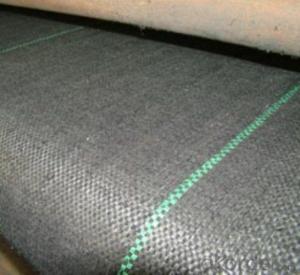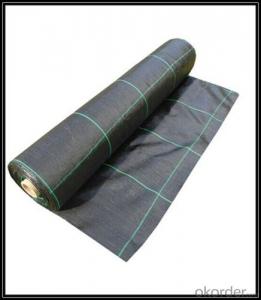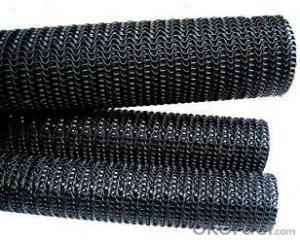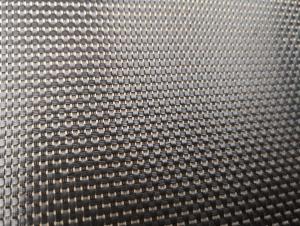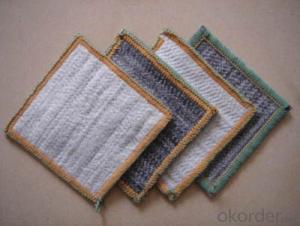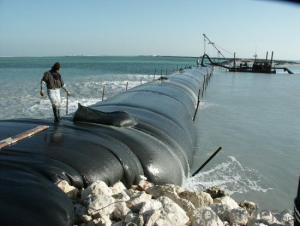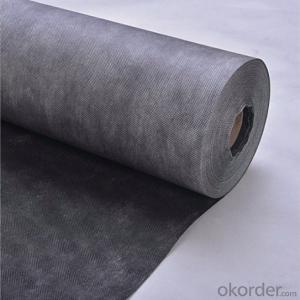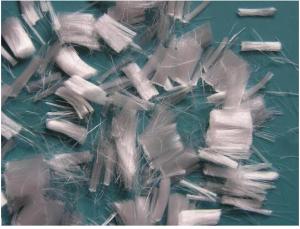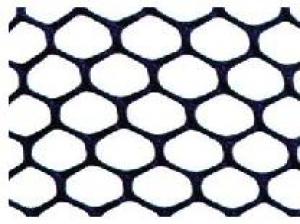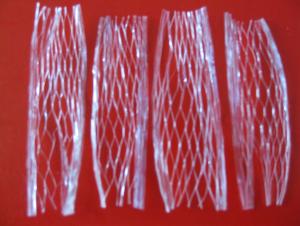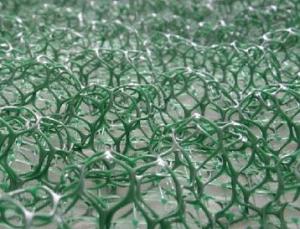Weed Control Fabric for Green Plants Stab Resistant
- Loading Port:
- Qingdao
- Payment Terms:
- TT or LC
- Min Order Qty:
- 5000 m²
- Supply Capability:
- 100000 m²/month
OKorder Service Pledge
OKorder Financial Service
You Might Also Like
Weed Control Fabric for Green Plants Stab Resistant
Description Of Weed Control Fabric for Green Plants Stab Resistant
This Weed Control Fabric consists of two layers of geotextiles, (one is Needle-punching Non-woven, the other is PP woven) composited by heating bonding or needle-punch process.
Main Features of Weed Control Fabric for Green Plants Stab Resistant
1. Weed eliminating
2. Strong UV-proofing
3. Humidity-maintaining, to provide soil with expected fertilizer and air
4. Extraordinary penetration of water and air
5. Excellent tenacity and strength
6. Durable, mildew resistance and corrosiveness resisting
7. Light weight to facilitate installation and to follow natural ground profile
8. Suitable for landscape, board and pavement
9. High quality, low price and fashionable design
10. Long service life
Applications of Weed Control Fabric for Green Plants Stab Resistant
1. UV-Resistance
2. Good penetration of water and air
3. This environment-friendly Weed Control Fabric eliminates the use of herbicide
4. Composition of Woven Fabric and Non-woven seems both fashionable and economically durable.
IMages of Weed Control Fabric for Green Plants Stab Resistant
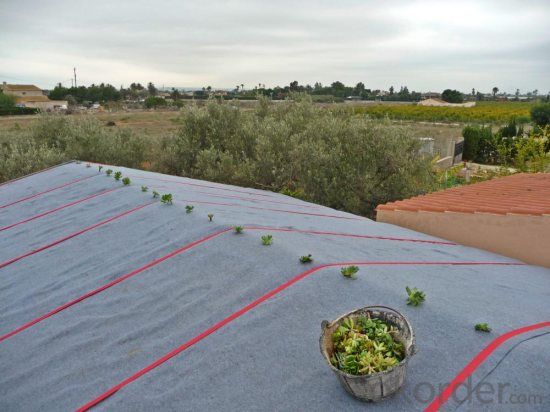
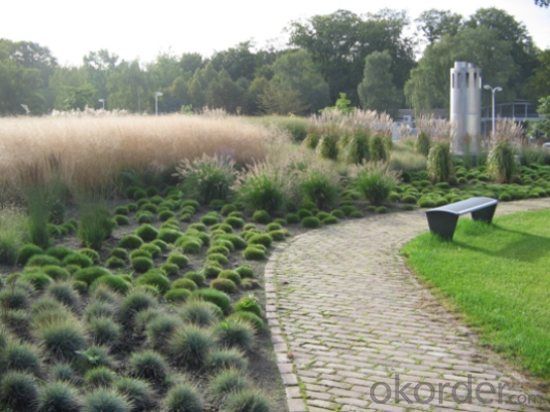

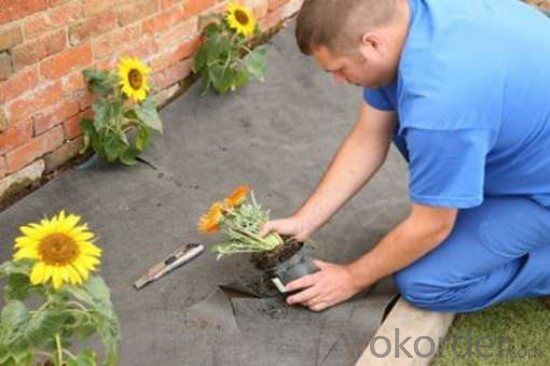
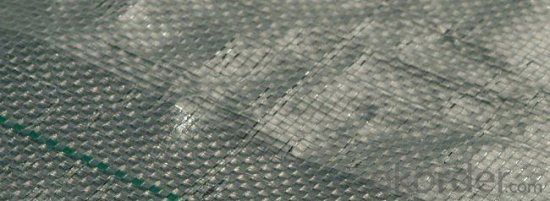
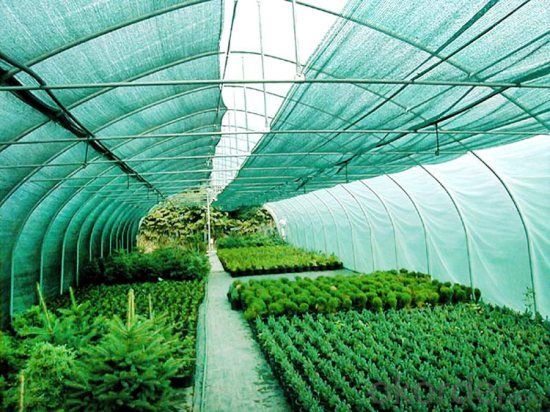
FAQ:
1. What are we supplying?
We are specialized in producing .geotextile , geocell, geogrid, geomembrane
2. How Many years experience do we have?
We have been exported to more than 15 countries in the past 10 years.
3. How long do we usually reply your request?
We always reply our customer within 12 hours.
- Q:Can earthwork products be used for constructing raised beds in gardens?
- Yes, earthwork products can be used for constructing raised beds in gardens. Earthwork products such as topsoil, compost, and mulch provide a solid foundation for raised beds, improve soil fertility, and help retain moisture in the garden. They can be used to create a raised bed structure and fill it with nutrient-rich soil, promoting healthy plant growth and providing a productive space for gardening.
- Q:Are earthwork products suitable for underground applications?
- Yes, earthwork products, such as geotextiles, geogrids, and geosynthetics, are suitable for underground applications. These products are designed to provide reinforcement, stabilization, and drainage in various construction projects, including tunnels, underground structures, and excavations. They help improve the soil's mechanical properties, prevent erosion, and enhance the overall performance and longevity of underground infrastructures.
- Q:How are geocells used for erosion control on coastal cliffs?
- Geocells are used for erosion control on coastal cliffs by providing structural support and stability to the soil and slopes. These three-dimensional honeycomb-like structures are filled with soil or other materials and then placed on the cliff face. The geocells help to prevent soil erosion and minimize the impact of wave action, as they create a reinforced layer that can withstand the forces of wind and water. The cells also promote vegetation growth, further enhancing their effectiveness in controlling erosion on coastal cliffs.
- Q:How do geosynthetic clay liners work in landfill projects?
- Geosynthetic clay liners (GCLs) are used in landfill projects as a barrier system to contain and prevent the migration of hazardous waste and leachate. GCLs consist of a layer of bentonite clay sandwiched between two geotextiles. The clay acts as a low-permeability material, absorbing and swelling in the presence of water, thereby creating a barrier that restricts the movement of fluids. The geotextiles provide reinforcement and protection to the clay layer. Overall, GCLs work by effectively sealing the landfill cells, reducing the potential for contamination and protecting the surrounding environment.
- Q:Are earthwork products suitable for use in coastal areas?
- Yes, earthwork products can be suitable for use in coastal areas. These products, such as geotextiles and erosion control materials, can help stabilize the soil, prevent erosion and protect coastal areas from the impact of waves, tides, and storms. They can be used to reinforce dunes, construct seawalls, or create barriers that prevent sediment migration. However, the specific suitability of earthwork products may depend on factors like the local climate, wave conditions, and the type of coastal environment.
- Q:The relationship between material development and civil engineering development
- The development of civil engineering depends on the development of materials, the application of new materials, reducing the cost of civil engineering costs. Such as the emergence of light steel structure, the emergence of insulation board building energy has been a breakthrough, and so on. There are three major mechanics in civil engineering; theoretical mechanics; material mechanics; structural
- Q:Civil engineering materials stone test, the determination of stone grade with what practical significance?
- Select the best proportion of aggregate, for the preparation of concrete with the ratio.
- Q:How do geocomposites help in erosion control in earthwork applications?
- Geocomposites help in erosion control in earthwork applications by providing an effective barrier against soil erosion. They are made up of multiple layers, typically consisting of a geotextile and a geomembrane, which work together to prevent the movement of soil particles and the loss of vegetation. The geotextile layer acts as a filter, allowing water to pass through while retaining soil particles, and the geomembrane layer acts as a barrier, preventing water from infiltrating the soil and causing erosion. This combination of layers helps to stabilize slopes, control runoff, and protect the underlying soil, ultimately reducing erosion and improving the overall durability of earthwork structures.
- Q:What are the different installation guidelines for earthwork products?
- The installation guidelines for earthwork products may vary depending on the specific product being used. However, some general guidelines to consider include: 1. Preparing the site: Clear any vegetation, debris, or existing structures from the area where the earthwork product will be installed. 2. Excavation: Dig a trench or hole of the appropriate size and depth to accommodate the product. 3. Compaction: Compact the soil at the bottom of the excavation to provide a stable base for the earthwork product. 4. Placement: Carefully place the earthwork product into the excavation, ensuring it is properly aligned, level, and positioned according to the manufacturer's instructions. 5. Backfill: Fill the space around the product with select backfill material, compacting it in layers as necessary to provide stability and prevent settling. 6. Securing: If required, secure the earthwork product using appropriate fasteners or connectors as specified by the manufacturer. 7. Finishing: Complete any additional steps such as grading, compaction, or landscaping to ensure the earthwork product is properly integrated into the surrounding environment. It is crucial to consult the specific installation guidelines provided by the manufacturer for the earthwork product being used, as they may include additional or specific instructions for optimal installation.
- Q:Can earthwork products be used in coastal protection projects?
- Yes, earthwork products can be used in coastal protection projects. Earthwork products such as sand, gravel, and rocks are commonly used in coastal protection measures such as beach nourishment, dune restoration, and shoreline stabilization. These materials help to mitigate erosion, provide natural barriers against storm surges, and enhance the resilience of coastal areas against flooding and erosion.
1. Manufacturer Overview |
|
|---|---|
| Location | |
| Year Established | |
| Annual Output Value | |
| Main Markets | |
| Company Certifications | |
2. Manufacturer Certificates |
|
|---|---|
| a) Certification Name | |
| Range | |
| Reference | |
| Validity Period | |
3. Manufacturer Capability |
|
|---|---|
| a)Trade Capacity | |
| Nearest Port | |
| Export Percentage | |
| No.of Employees in Trade Department | |
| Language Spoken: | |
| b)Factory Information | |
| Factory Size: | |
| No. of Production Lines | |
| Contract Manufacturing | |
| Product Price Range | |
Send your message to us
Weed Control Fabric for Green Plants Stab Resistant
- Loading Port:
- Qingdao
- Payment Terms:
- TT or LC
- Min Order Qty:
- 5000 m²
- Supply Capability:
- 100000 m²/month
OKorder Service Pledge
OKorder Financial Service
Similar products
New products
Hot products
Hot Searches
Related keywords
